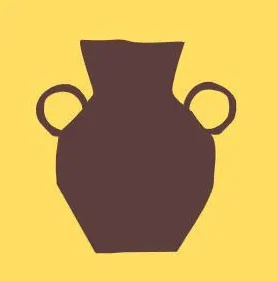Artificial Intelligence’s productivity and immense potential could reshape archaeology as we know it.
When thinking of Artificial Intelligence, archaeology usually isn’t the first thing to come to mind. However, AI has the potential to drastically transform the field of archaeology through its ability to process large amounts of data, create precise models, examine artifacts, and more.
Extensive Data Analysis
AI could be used to accurately process vast amounts of data in seconds, a task that would take humans hours. AI also excels at applying this data to recognize patterns and discover anomalies in data, for example inconsistent stratigraphy or unusual shapes in radar data, which could indicate previously unknown archaeological sites.
This capability is highlighted in the study “A Human-AI Collaboration Workflow for Archaeological Sites Detection” by Luca Casini, in which AI was able to work in tandem with archaeologists to review satellite imagery from Mesopotamian floodplains, achieving around around 80% accuracy in detecting undiscovered archaeological sites. Utilizing AI to review data could increase precision and efficiency while also reducing the number of tedious tasks for archaeologists.
Precise and Applicable Models
By training AI using vast amounts of data from past excavations, AI could recognize specific artifacts, materials, and landscapes, using these to generate accurate models of sites in their prime. This new technology would allow archaeologists to investigate ancient architecture, infrastructure, and daily life. AI could also be used to analyze a site’s geography, climate, and wildlife to recreate ancient landscapes, helping archaeologists to understand how a site’s environment may of impacted its development. Additionally, AI could examine artifact distribution, ancient records and inscriptions, and geographical data to locate areas of high economic activity and map out likely trade routes at the time. AI could literally help archaeologists step back into the past.
Researchers at Stanford explored this capability through the use of AI to analyze the distribution of ceramic jars (amphorae) that transported wines and oils throughout the Roman Empire. The AI algorithm then predicted complex trade networks, enabling archaeologists to better understand the movement and exchange of goods during this era.
Artifact Evaluation
AI’s powerful processing skills could enable archaeologists to categorize artifacts in a much more efficient manner and also learn more about the artifacts on a deeper level. For example, AI could recognize patterns in language, material, and textures specific to artifacts from different cultures and identify the origin of the artifacts. In addition, AI could translate complicated texts and inscriptions which would originally be impossible to decipher. With the help of an AI model, nearly 1,000 ancient scrolls from Pompeii that were incinerated by Mount Vesuvius’s eruption could be translated, although badly carbonized, and so fragile archaeologists could not unravel them. X-rays tomography and computer vision was used to “virtually unwrap” the scrolls and AI was then used to detect the ink and transcribe the writing, revealing Greek philosophical writings.
Works Cited
Casini, Luca, et al. “A Human–AI Collaboration Workflow for Archaeological Sites Detection.” Scientific Reports, vol. 13, no. 1, 29 May 2023, http://www.nature.com/articles/s41598-023-36015-5, https://doi.org/10.1038/s41598-023-36015-5. Accessed 30 Sept. 2023.
Iyer, Archith, and Manoj Franklin. “AI-Powered Archaeology: Determining the Origin Culture of Various Ancient Artifacts Using Machine Learning.” Journal of Student Research, vol. 11, no. 1, 13 Mar. 2023, https://doi.org/10.47611/jsrhs.v11i1.2465. Accessed 20 Mar. 2023.
Lavanga, Claudio. “Secrets of Ancient Herculaneum Scroll Deciphered by AI.” NBC News, 9 Feb. 2024, http://www.nbcnews.com/news/world/secrets-ancient-herculaneum-scroll-deciphered-ai-rcna137960. Accessed 27 May 2024.
Mortensen, Eva. “Simulating the Roman Economy: Amphora Distribution and Transport Costs.” Urbnet.au.dk, 22 May 2020, urbnet.au.dk/news/nyhed/artikel/simulating-the-roman-economy-amphora-distribution-and-transport-costs. Accessed 27 May 2024.

